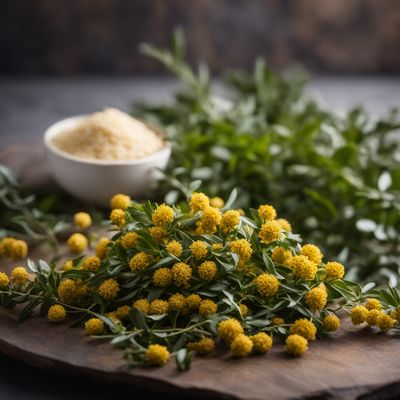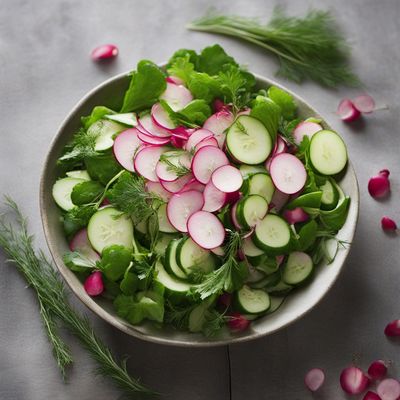
Ingredient
Greek sage
The Mediterranean Herb
Greek sage is characterized by its small, velvety leaves that are gray-green in color. It has a strong aroma and a slightly bitter taste, which mellows when cooked. Its versatility makes it suitable for both savory and sweet dishes, adding depth and complexity to various recipes.
Origins and history
Greek sage has a long history dating back to ancient times. It was highly regarded by the Greeks and Romans for its medicinal properties and was often used in religious ceremonies. Today, it remains a staple in Mediterranean cuisine and is widely cultivated in countries such as Greece, Italy, and Turkey.
Nutritional information
Greek sage is a good source of antioxidants and essential oils. It contains vitamins A, C, and K, as well as minerals like calcium and iron. It is also known for its anti-inflammatory properties and potential health benefits.
Allergens
There are no known allergens associated with Greek sage.
How to select
When selecting Greek sage, look for fresh leaves that are vibrant in color and free from wilting or discoloration. Opt for organically grown sage to ensure the absence of pesticides or chemical residues.
Storage recommendations
To prolong the freshness of Greek sage, store it in a plastic bag or airtight container in the refrigerator. Alternatively, you can dry the leaves and store them in a cool, dark place for future use.
How to produce
Greek sage can be easily grown in herb gardens or pots, requiring well-drained soil and ample sunlight. It is a hardy plant that can withstand various climates, making it suitable for amateur herb enthusiasts.
Preparation tips
Greek sage can be used in a variety of dishes, including roasted meats, poultry, stuffing, soups, stews, and sauces. It pairs well with other Mediterranean ingredients such as lemon, garlic, olive oil, and tomatoes. It can also be infused into teas or used as a garnish for cocktails.
Culinary uses
Greek sage is commonly used in Mediterranean cuisines, particularly in Greek and Italian dishes. It is a key ingredient in dishes like roasted lamb with sage, sage-infused olive oil, sage butter sauce, and sage-infused pasta sauces.
Availability
Greek sage is widely available in Mediterranean countries such as Greece, Italy, and Turkey. It can also be found in specialty grocery stores or herb markets in other regions.
More ingredients from this category

Curry herb
The Fragrant Spice: Curry Herb

Borage
The Starflower Herb: Unveiling the Secrets of Borage

Sage
"The Wise Herb: Unveiling the Secrets of Sage"

Other species and hybrids of genus Salvia, not elsewhere mentioned
Exploring the Hidden Gems of the Salvia Genus: A Culinary Adventure

Jamé's sage
The Aromatic Herb of Wisdom
Recipes using Greek sage » Browse all

Henan-style Porilainen
Henan-inspired Pork Sandwich with a Spicy Twist

Szałot with a Twist
Polish Delight: A Modern Twist on Szałot

Spicy Korean Tofu Salad
Fiery Tofu Delight: A Spicy Korean Salad

Refreshing Cold Buckwheat Noodles with Spicy Sauce
Chilled Noodles with a Fiery Kick: A Korean Delight

Tianjin Caviar
Savory Tianjin Bean Salad

Chungmu Gimbap with a Twist
Seaweed Rice Rolls: A Flavorful Twist on Chungmu Gimbap

Chirashizushi with a Twist
Sakura Delight: A Modern Twist on Chirashizushi

Chai Poh Neng - Chinese-Style Omelette with Preserved Radish
Savory Delight: Chinese Preserved Radish Omelette

New Nordic Sillsalat with a Twist
Nordic Delight: A Modern Twist on Sillsalat

Homemade Kimbap Rolls
Flavorful Korean Rice Rolls: A Delightful Twist on Kimbap

Pyongyang Naengmyeon with Spicy Beef Broth
Chilled Delight: Spicy Beef Naengmyeon - A Refreshing Korean Noodle Dish

Southern Souse Delight
Zesty Southern Souse: A Tangy Delight for Your Taste Buds